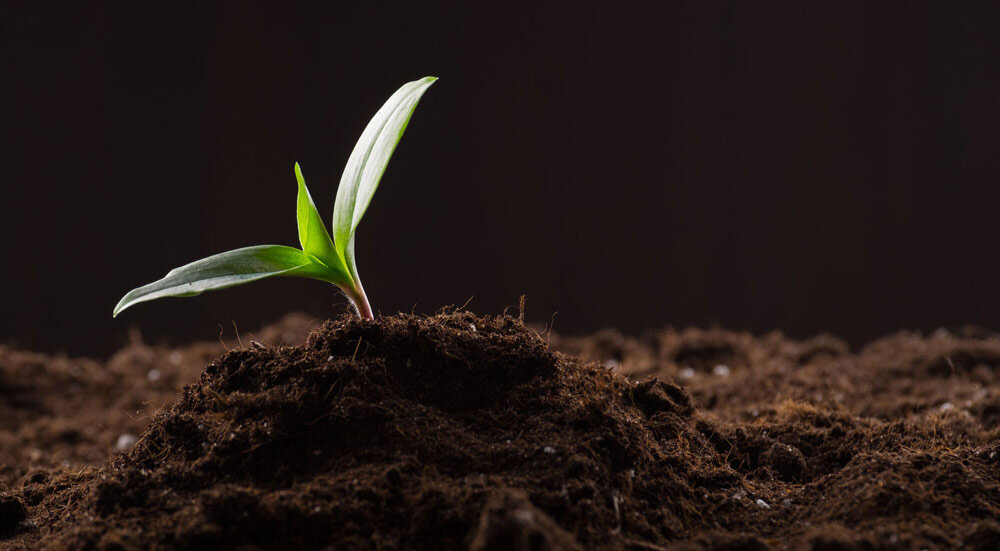Why sod?
Hoerr Nursery’s sod is an easy way to create your dream lawn.
Advantages of Sod Over Seed
Unlike seed, sod is more easily and quickly established, providing a usable lawn in about a month’s time.
Homes with a sodded lawn have an increased market value of 5% – 10%.
Sod grows in areas where seed cannot take hold, such as a slope.
Unlike seed, sod can be installed over the entire growing season (from early spring until the ground freezes in the fall or early winter).
Sod grows regardless of weather conditions.
It requires no special tools of expertise.
The successful installation and growth of your sod depends upon correct planting and follow-up care.
Site Preparation, Remove Unwanted Vegetation or Impediments
All weed and other existing vegetation should be killed with Round-Up® to ensure no undesirable growth develops with the new sod. After the initial spraying, wait seven days and respray any vegetation that shows normal growth. After three or more days following the second spraying, remove the dead and dying vegetation. Also remove anything, such as rocks or trash that would prohibit a solid weaving of the roots of the sod into the soil below.
Checking the Grade
Prior to laying sod is the best time to modify the grade of your site. Rolling a lawn will not remove undulations in a poorly graded lawn; therefore, be sure the soil is smooth. If your soil is heavy and compacted, rototill it. Otherwise, lay sod after removing the vegetation.
Fertilizer
Prior to laying new sod, spread Fertilome’s® Winterizer or New Lawn Starter® on top of the soil. If you incorporated fertilizer into the soil when rototilling, this step is not necessary.
For lawns sodded before May 10, you may want to apply a Crabgrass Preventer. The sod itself is not prone to crabgrass invasion, but crabgrass seed can germinate from the existing subsoil. In addition, it is not unusual to see watergrass germinate, too. Watergrass is a thick bladed grass; as you begin mowing, the watergrass disappears.
Irrigation
Watering your sod is the single most important step in successful sod establishment. Immediately after laying, saturate the sod and and soil to the point it is too wet to walk on without leaving a depression. Water daily for the first week or two depending on prevailing weather conditions. During this period, overwatering will never be a problem. Under watering will lead to damage of loss of sod.
Continue to water sod periodically for several weeks. A rule-of-thumb is water daily for the first week or two , then every other day for one or two weeks, then every third day for one week, then every fourth day for a week and so on, until you are watering once per week. Continue to water once per week for the remainder to the season, which ends when the grass stops growing in the fall.
An exception is sod laid in late fall; although the grass blades are not growing, the roots continue growing until the soil freezes. Consequently, sod laid in the late fall is watered until the ground freezes.
Mowing
Sod often requires mowing 7-10 days after laying. Let sod dry out enough to walk on it, and raise your lawnmower to the highest setting. You will not hurt sod by walking on it at this time. After mowing, water sod throughly. Following the initial cutting, gradually lower the cutting height and continue normal mowing practices.
Soil Testing
If your soil is poor, particularly if your “topsoil” is actually the subsoil from your basement that was spread over the yard following home construction, have it tested. This test will tell you if you need to amend the soil prior to laying sod. It’s an ideal and practical time to improve your soil. These modifications might include changes in pH (turf prefers a slightly acidic soil with a pH of 6.0-7.0, consequently, never add lime without a test first), or additions of phosphorous, potassium, or organic matter.
Soil testing is done through: SoilKit.com You can buy the test online or at Hoerr Nursery, take it home, put their sample in the included postage-paid package, and send it off in the mail. Your results will be emailed both to you and to a Hoerr Nursery Horticulturist who can go over the results with you. It will also recommend specific soil amendments based on their results.
Four to six weeks after the initial laying, begin normal lawn fertilizing practices for the current time of year. With sod, you can have the thickest, dark green carpet of mature grass in your neighborhood in a very short time. Pick up our “How to Guide for Lawn Care” to follow the proper procedures to ensure your lawn remains a luxurious, living, carpet of green.
Installation
Lay sod with edges close together, leaving no gaps between rolls. Avoid stretching or pulling sod while laying it, as this leads to “shrinkage” and gaps between rolls. Stagger the ends of the rolls, like bricks are laid on a house, to avoid the “lined up” effect. After laying, you can lightly roll the sod to assure good root/soil contact, although this is not usually necessary. On the slopes or berms lay the rolls across the slope. This prevents water from running down the seams and preventing possible erosion. On steep slopes, secure sod with “U-staples” or pegs to prevent slippage.







